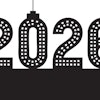
Creating a self-running business is the single most challenging task a business owner will ever face. I’ve personally met only five self-running businesses who were smaller than $15 million in annual sales.
To build a self-running business you need to progress through a few stages.
Stage 1: Profitability
The first stage is figuring out how to be profitable. Not surprisingly, this is the hardest stage to pass through. Over 95% of small businesses close their doors within 10 years of starting up. Four of the remaining five percent are squeaking by. One percent is making big bucks.
To get through the first stage means you need to be the one out of 100 that figures out how to become and remain profitable.
Stage 2: Perfecting key business functions
The second stage is perfecting the key functions of your business. For contractors that means estimating, job costing and field management. Those three areas can almost always be successfully addressed with a couple of key hires.
At this point, the decision making and long work hours of a small leadership team produce the results. These individuals rely on experience and instinct and intuitively know what to do.
Stage 3: Systemization
The third stage is the easiest to break through as all it takes is a bit of self-reflection, effort and commitment. The third stage is the systemization of your business.
Systemization means creating a common understanding of how each and every process in your business should run. The challenge is translating the instinctive habits of "that’s just how we do it" into well thought through and documented procedures for "how we do it."
To document the way your business runs you should get up to speed on process mapping. The phrase means just what it sounds like. You draw a map of the process.
The best method to use is a flowchart. A flowchart is a connect-the-dots representation of the steps in a process. It is far more user friendly than a written sequence with numbered steps.
Process maps depict decision points and resulting either/or paths clearly. That is very difficult to do with step-by-step written instructions.
A preferred and advanced form of flowcharting that is very helpful when the process crosses multiple people or groups is the Swimlane version.
In a Swimlane flowchart each step is placed in the lane that represents the person or group who is to perform the task. As you look across a given Swimlane you can quickly see which tasks and decisions belong to the associated person or group.
I recommend Microsoft’s Visio flowcharting software. Microsoft improves the user friendliness with each new release. I have used several other flowcharting programs and find Visio to be far and away the best for ease of use, ease of learning and powerful features.
Flowcharting is a bit of an art. It requires the use of both sides of your brain. Until you develop the ability to imagine the process correctly in first draft.
I recommend scribbling on a large sheet of paper prior to creating it in Visio. You will end up with a lot of erasing and scratch-throughs until you get the draft to point where replicating it in Visio will be rather straight forward. Eventually you will develop the ability to create your first draft directly in Visio with minimal deletions.
Document your system
When documenting your systems avoid chasing rabbits down rabbit holes. This is a common beginner’s mistake. Approach flowcharting like you are peeling an onion (tears included).
Start with a high level, quite simplistic chart. As errors pop up during execution of the work/process over time you will figure out which parts of the process require greater documented detail. Errors occur when people don’t fully understand what to do and how a decision should be made.
Errors are you indicator that your team’s understanding is insufficient to perform the task appropriately. Errors are your signal that the time has arrived to take the associated high level flowchart and blow out the step(s) that is unclear into a separate detailed flowchart.
This approach will keep the time demands of documenting your systems to a minimum and will lead to much more user friendly flowcharts.
Excessively detailed flowcharts are a bit difficult to follow. Be highly detailed only when necessary.
To speed up the creation process I recommend delegating the first pass to the people who perform the process. For example, have your estimator draw out on paper the steps he goes through to create an estimate. Have your operations or project manager draw out how he monitors field productivity.
Review the charts, ask questions, reach agreement then draw them in Visio. Consider hiring a high school student as an intern/part-time worker for creating the Visio flowcharts. That way your team can concentrate on making you money while the intern concentrates on documenting your systems.
Once the flowcharts are complete, go over them with the key members of your team, note edits, have them picked up, print out the flowcharts, laminate them, and pass them out to the people who work those processes.
At that point you have completed stage three; you have systematized your business.



















